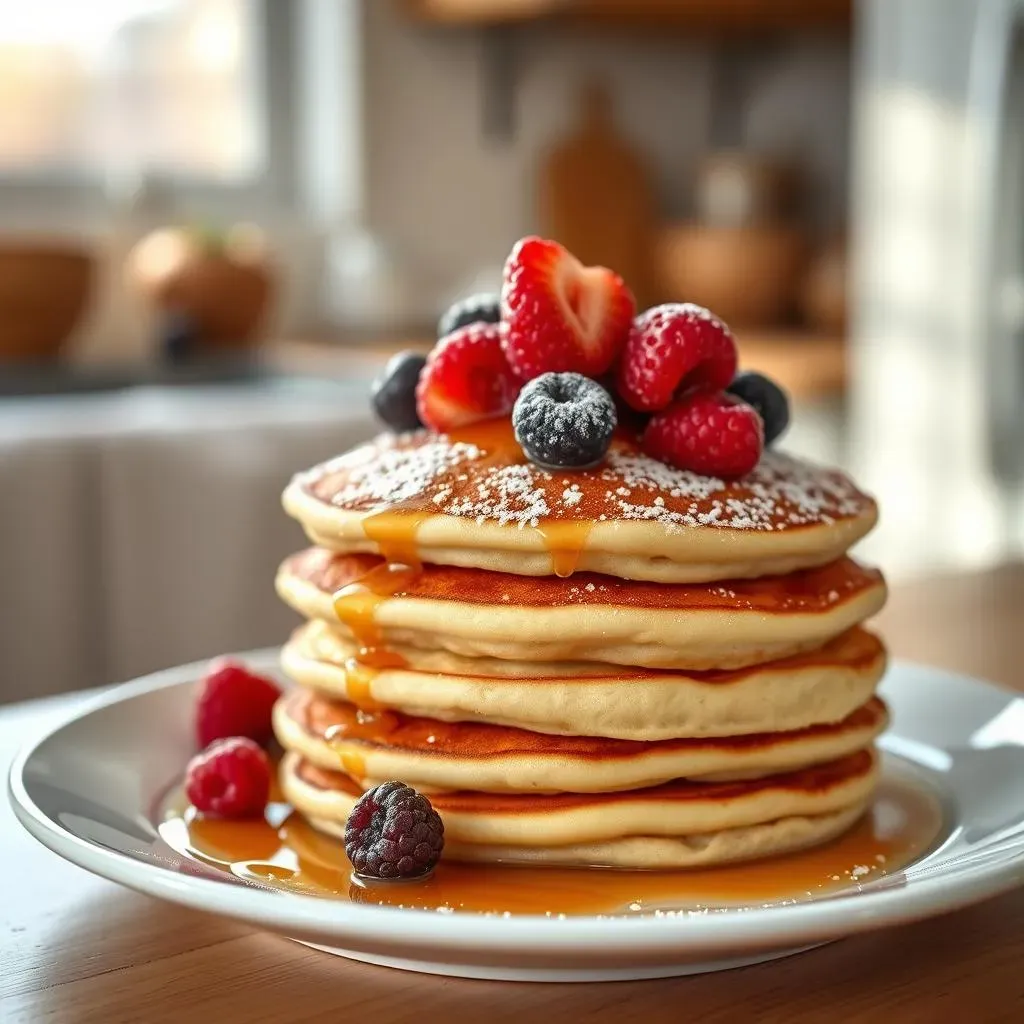Table of Contents
Is breakfast a battleground in your house? Do you struggle to find a morning meal that’s both delicious and safe for your kids with allergies? I get it! As a parent, navigating food sensitivities while trying to make something that actually gets eaten can feel like an impossible task. That’s why I’m so excited to share this **gluten-free pancake recipe for kids with allergies** that’s not only easy to make but also incredibly yummy. We’re not talking about dry, crumbly hockey pucks here. We’re talking fluffy, golden pancakes that even the pickiest eaters will gobble down. We'll start by understanding why gluten can be a problem and which flours work best for those with sensitivities. Then, I will guide you through the steps to create the perfect batter and how to cook it to a golden brown. We’ll also cover fun mix-in ideas to keep things interesting, plus tips on freezing and storing so you can have a quick breakfast ready to go. I’ll even share some troubleshooting advice and real-life success stories from other parents, so you'll feel confident in your pancake-making abilities. Let’s make mornings a little easier and a lot more delicious, shall we?
Understanding Gluten and Allergies
Understanding Gluten and Allergies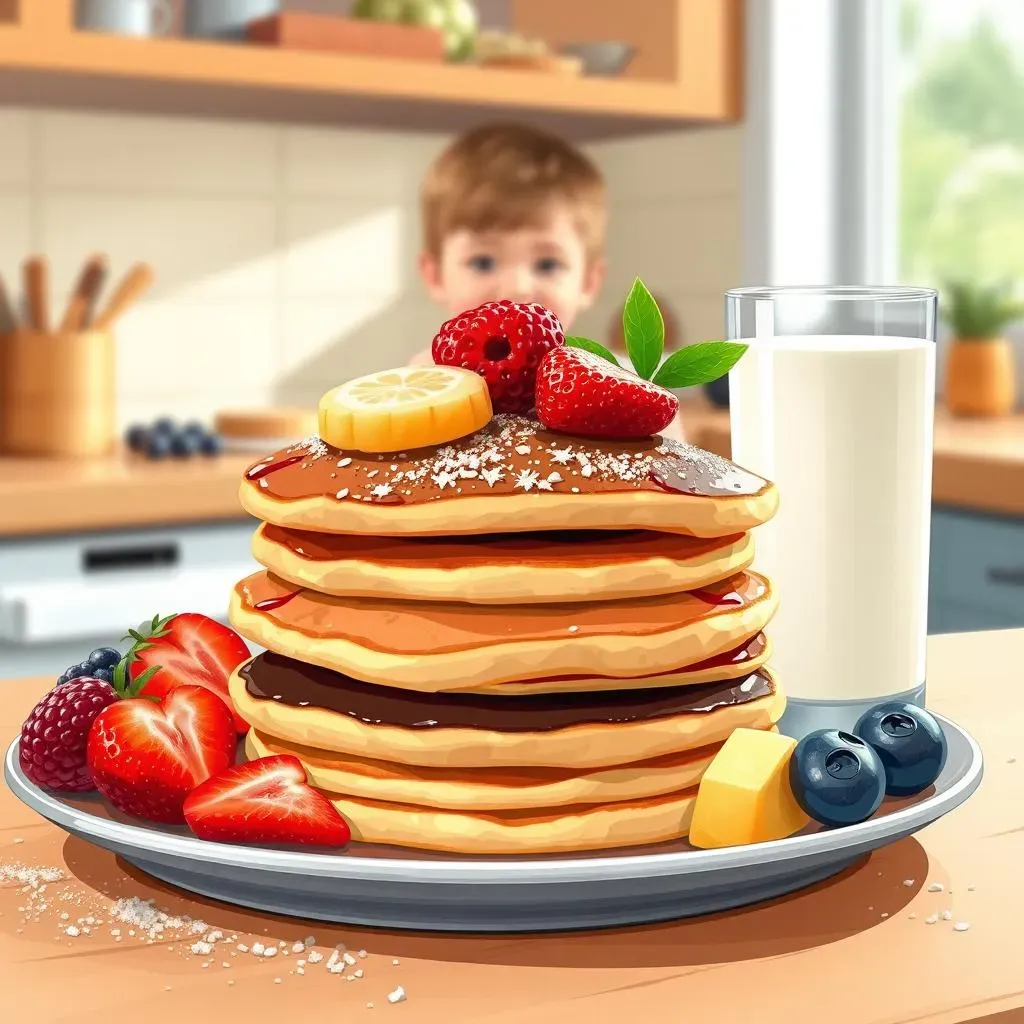
What's the Deal with Gluten?
Okay, let’s get real about gluten. It’s a protein found in wheat, barley, and rye, and it's what gives bread that lovely, chewy texture. For most people, gluten is no big deal. They eat it, they digest it, and they move on with their lives. But for some, it's like a tiny gremlin causing chaos in their digestive system. These folks might have celiac disease, where their immune system freaks out when gluten shows up, or they might have a non-celiac gluten sensitivity, which is less severe but still causes discomfort. It’s like a party crasher that no one invited.
So, why are we talking about this when we're trying to make pancakes? Because if you're making pancakes for kids with allergies, you need to be aware of how gluten can cause problems. It's not just about having a tummy ache; it can affect their overall well-being. If you're new to this, don't worry, we'll make it easy. We are on a mission to make sure every kid can enjoy a delicious breakfast, even if they can't have the usual wheat-based pancakes.
Want to learn more about specific diets? Check out our guide for best gluten-free pancake recipe for celiacs
Allergies That Tag Along
Now, let's talk about the buddies gluten likes to hang out with – other allergies. It's not uncommon for kids who are sensitive to gluten to also have issues with other foods. Dairy is a big one. Many kids who can't tolerate gluten also struggle with milk, cheese, and yogurt. It's like they’re a package deal of digestive challenges. Then you have eggs, soy, and nuts, which are also common culprits. It's like the allergy world is a big, confusing party where everyone's got a dietary restriction.
This can make breakfast a minefield, right? But don't worry, that’s why this recipe is a game-changer. It’s designed to be super flexible, so you can easily swap out ingredients to suit your child's specific needs. We aim to make this recipe as inclusive as possible. You can even explore gluten-free pancake with dairy-free options for more inspiration.
Common Allergens | Why They're Tricky |
|---|---|
Gluten | Causes immune response or sensitivity |
Dairy | Lactose intolerance or dairy protein allergy |
Eggs | Common allergy, can cause digestive upset |
Soy | Can cause allergic reactions in sensitive individuals |
Spotting the Signs
How do you know if your kid has a gluten or other allergy? It's not always obvious. Sometimes, it’s a classic tummy ache, bloating, or gas. Other times, it might show up as skin rashes, eczema, or even a runny nose. It's like their bodies are sending out SOS signals in different ways. For instance, I had a friend whose kid would get super cranky and tired after eating gluten, which wasn't something I'd immediately associated with food. Then, it was like a lightbulb went off. It's important to pay attention to these subtle cues.
If you suspect your child might have a gluten or other food sensitivity, it’s a good idea to chat with your doctor or a registered dietitian. They can help you figure out what's going on and guide you on the best path forward. And, of course, try this recipe! It's a great starting point for a delicious, allergy-friendly breakfast. Remember, you're not alone in this, and we’re here to help. Want to try another recipe? See easy gluten free pancake recipe for beginners
Choosing the Right GlutenFree Flours
Choosing the Right GlutenFree Flours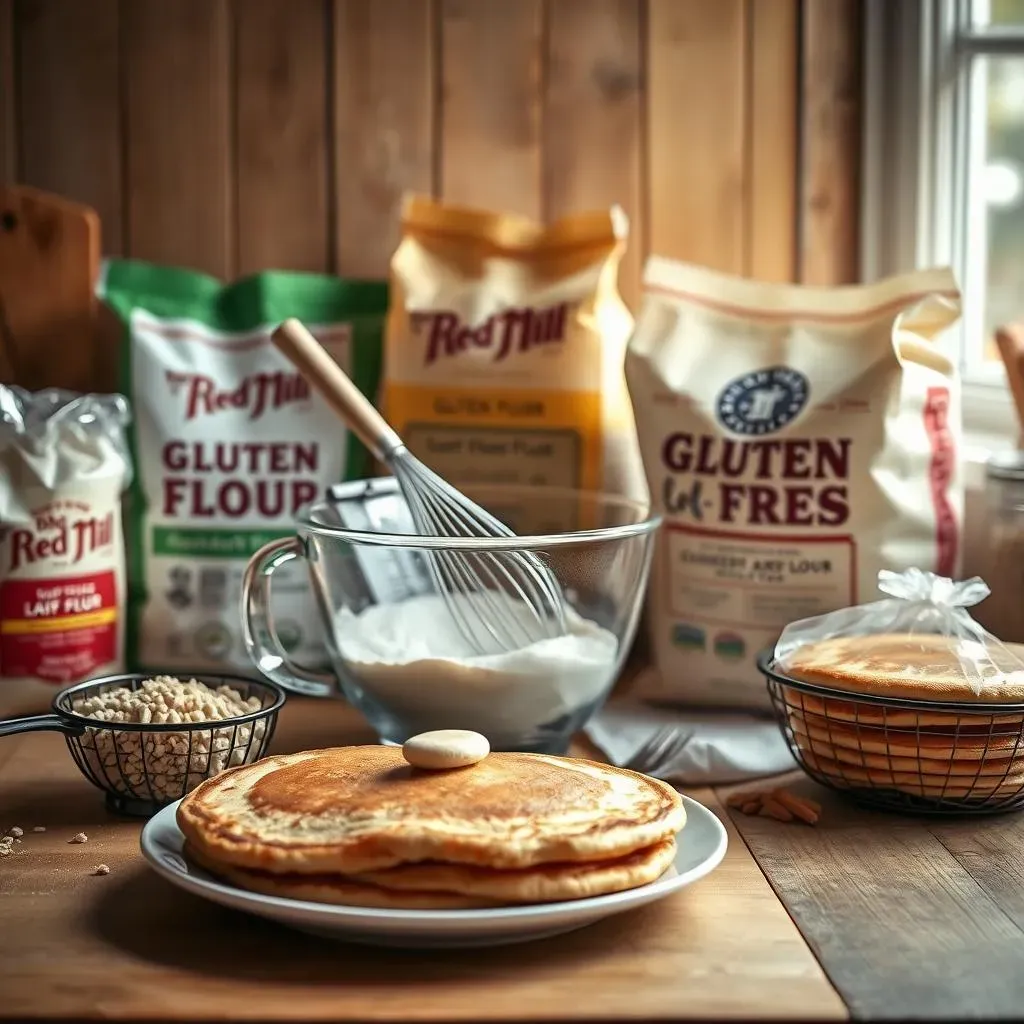
Why Not All Flours Are Equal
Okay, so you're ready to ditch the regular wheat flour, but then you're faced with a wall of gluten-free options. It's like walking into a candy store, but instead of sweets, you have a bunch of different flours. The truth is that not all gluten-free flours are created equal. Some are gritty, some are dense, and some just don’t play nice in pancake batter. It’s like trying to build a house with mismatched bricks. You need the right materials to get the job done well. Using the right flour will make or break your gluten-free pancake experience.
For example, almond flour, while nutritious, can make pancakes a bit too dense. Coconut flour, on the other hand, is super absorbent, meaning it can dry out your pancakes if you're not careful. You need to pick flours that will give you that light and fluffy texture we all crave. Trust me, I've had my fair share of pancake fails, and the flour is often the culprit. We'll guide you through the best choices for a successful and delicious breakfast. If you want to see more options, check out our gluten-free pancake recipe comparison.
Our Top Picks
After many kitchen experiments, I've found a couple of flours that consistently deliver amazing results when baking gluten-free pancakes. First up is Bob's Red Mill 1:1 Gluten-Free All-Purpose Flour. This blend is a game-changer because it’s designed to replace regular flour in recipes without any fuss. It's like the superhero of gluten-free baking. Then there's King Arthur's Measure for Measure Gluten-Free Flour, which is another solid choice that creates a lovely, light texture. These two are my go-to options because they make the process so much easier and more reliable. It’s like having a cheat code for gluten-free baking!
These blends are made to mimic the properties of wheat flour. They usually contain a mix of rice flour, tapioca starch, and other ingredients. You don't need to worry about complex ratios or adding extra binders like xanthan gum. It's a one-to-one swap, which makes baking so much less intimidating. However, if you do not have these brands, don’t worry we have you covered. You can explore gluten-free pancake recipe with a blend of flours to try different combinations.
Flour Brand | Why it's Great |
|---|---|
Bob's Red Mill 1:1 Gluten-Free All-Purpose Flour | Easy to use, great texture |
King Arthur's Measure for Measure Gluten-Free Flour | Reliable, light and fluffy results |
When You Need Other Options
Sometimes, you might not have those specific blends on hand, or you might be looking for something a little different. That’s totally fine! There are many other gluten-free flours you can use. Almond flour is a good source of protein but can make pancakes a little dense, so it’s best mixed with other flours. Oat flour is another option, giving a slightly nutty flavor and a bit of chewiness. Coconut flour is very absorbent, so you need to add extra liquid. Also, rice flour is a staple in many gluten-free blends and can be used on its own, but it can be a bit gritty if not combined with other flours.
Each of these flours has its own unique characteristics, so it's a good idea to experiment and see what works best for you. But if you’re just starting, I recommend sticking with the 1:1 blends. It's like learning to ride a bike, start with training wheels, and then take them off later. You can also check out fluffy gluten-free pancake using almond flour to get a better idea on how to use it. Remember, the goal is to make something delicious and enjoyable for everyone.
- Almond flour: Adds protein, but can be dense.
- Oat flour: Nutty flavor, slightly chewy.
- Coconut flour: Very absorbent, needs extra liquid.
- Rice flour: Can be gritty, best in blends.
Making the Perfect AllergyFriendly Pancakes
Making the Perfect AllergyFriendly Pancakes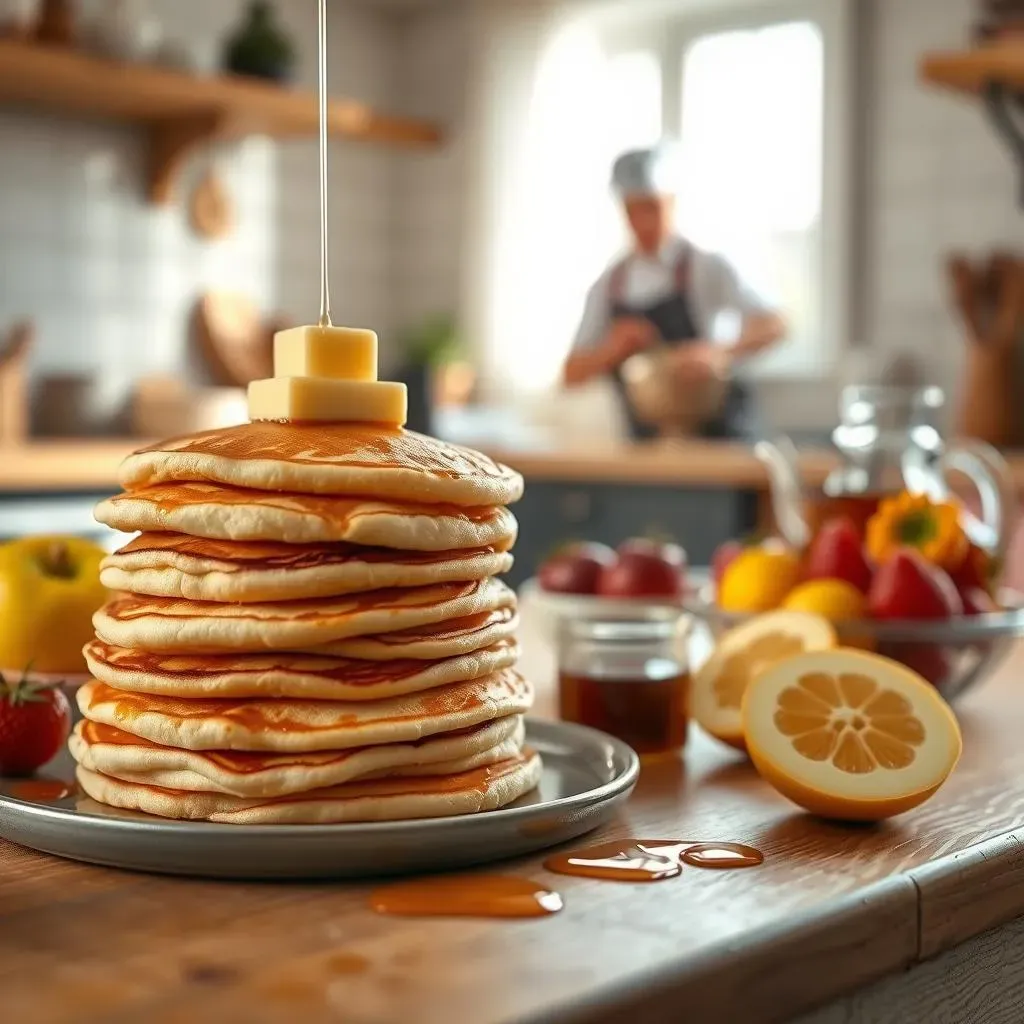
The Magic of Baking Powder
Okay, let's talk about a key ingredient that can make or break your pancakes: baking powder. It's not just a powder you dump in the batter; it's the secret weapon for fluffy pancakes. But here's the thing: it needs to be fresh! Old baking powder loses its oomph, and you end up with flat, sad pancakes. It's like trying to inflate a balloon with a hole in it—it just won't work. So, before you even start, check the expiration date on your baking powder. If it's been hanging out in your pantry for longer than six months, it might be time for a new container. Trust me, fresh baking powder is worth it. It’s that one ingredient that will turn your pancakes from dense to dreamy.
I once made a batch of pancakes with old baking powder, and they were so flat they looked like tortillas. It was a sad breakfast, to say the least. Ever since that day, I religiously check the expiration date. It's a small step but makes a big difference. Think of it like this: fresh baking powder is the engine that makes your pancakes rise. Don't skimp on it! You can find more tips on troubleshooting gluten-free pancakes if you have issues.
Mixing the Batter Like a Pro
Now, let's get to the fun part: mixing the batter! It’s not rocket science, but there are a few tricks to keep in mind. First, start with your wet ingredients: milk (or plant-based milk), eggs (or egg substitute), and melted butter (or oil). Whisk these together in a large bowl. Then, in a separate bowl, whisk together your dry ingredients: gluten-free flour, baking powder, salt, and any spices you’re using. The goal here is to avoid overmixing the batter. Overmixing develops the gluten in regular flour, making the bread chewy. Even without gluten, it can make your batter tough. It is like trying to mix cement with a spoon, it gets harder the more you stir.
Once your wet and dry ingredients are ready, gently pour the dry into the wet and mix until just combined. Don't worry if there are a few lumps; it’s better to have a few lumps than an overmixed batter. Let the batter rest for a few minutes while your pan heats up. This allows the baking powder to activate and the flour to absorb the liquid. It’s like letting the batter take a little nap before it becomes a delicious pancake. For more simple recipes, see easy gluten-free pancake recipe.
Step | Action |
|---|---|
1 | Whisk wet ingredients in a bowl. |
2 | Whisk dry ingredients in a separate bowl. |
3 | Gently combine wet and dry ingredients. |
4 | Let batter rest for a few minutes. |
Cooking for Fluffiness
Alright, your batter is ready, and it's time to cook those pancakes. Heat a lightly oiled griddle or frying pan over medium heat. You want the pan hot enough to cook the pancakes through without burning them. It's like Goldilocks – not too hot, not too cold, but just right. Pour about ¼ cup of batter onto the hot pan for each pancake. Cook for 2-3 minutes per side, or until golden brown and cooked through. You'll see little bubbles forming on the surface, which is a good sign that it's time to flip. Use a spatula to carefully flip the pancakes and cook for another 1-2 minutes. It’s like watching a magic trick as they transform into fluffy, deliciousness.
Don't overcrowd the pan; give each pancake enough space to cook evenly. Once cooked, transfer the pancakes to a plate and keep them warm while you cook the rest of the batter. It’s like a mini pancake assembly line. If you want to try a different flour, see gluten-free pancake with oat flour. And there you have it, perfectly cooked, allergy-friendly pancakes ready to be devoured. It is very rewarding to see those golden brown pancakes.
- Heat pan over medium heat.
- Pour ¼ cup of batter per pancake.
- Cook 2-3 minutes per side.
- Flip when bubbles appear.
- Don't overcrowd the pan
Mixins and Toppings for Picky Eaters
Mixins and Toppings for Picky Eaters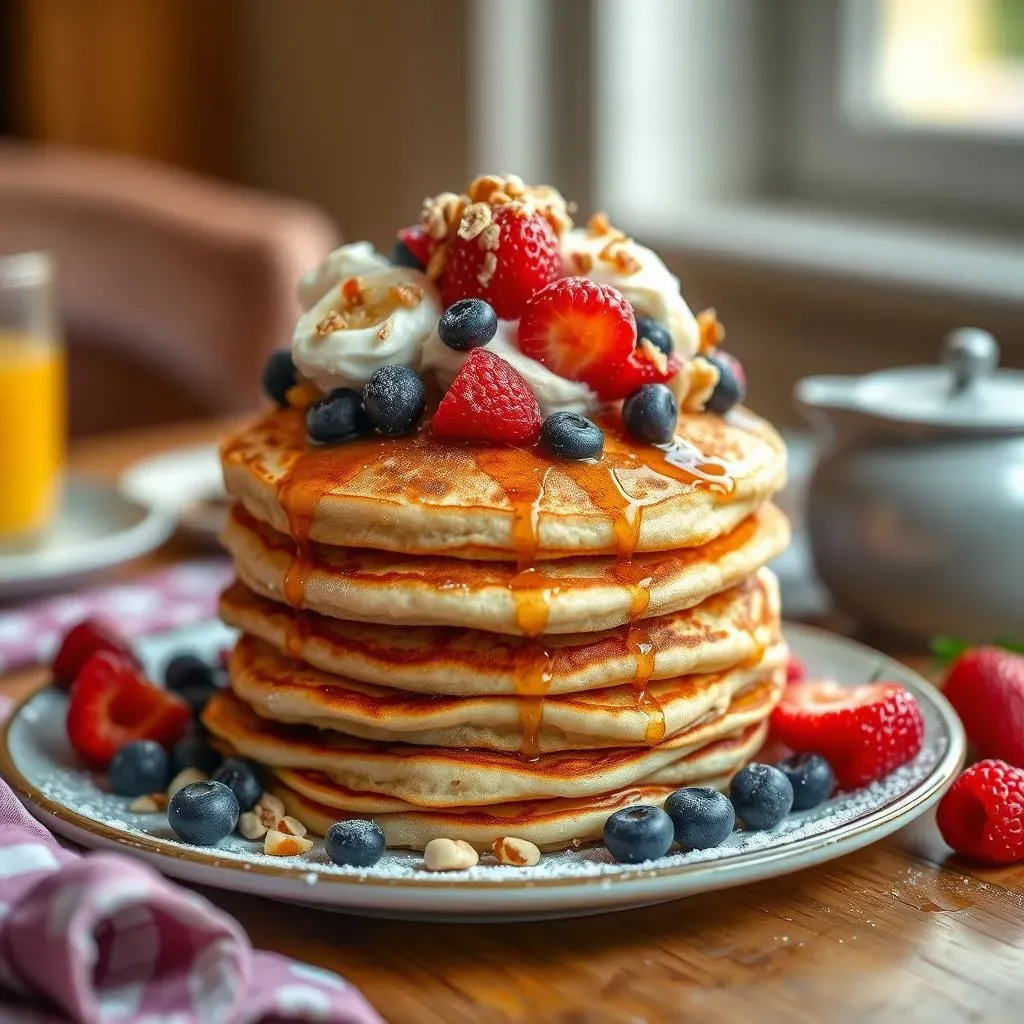
Safe and Fun Add-ins
Okay, so you’ve got your perfectly cooked pancakes, but now comes the real test: getting your picky eaters to actually eat them! That's where mix-ins come in. Think of them as little flavor bombs that can transform a plain pancake into something exciting. Berries are always a good bet, like blueberries, raspberries, and strawberries. They’re naturally sweet, full of antioxidants, and kids usually love them. You can also try mini chocolate chips for a bit of indulgence, or mashed bananas for some extra sweetness and moisture. It's like adding a secret ingredient that makes everything better. The goal is to make it fun and appealing, not just healthy.
I remember when my niece was a toddler, she would only eat pancakes if they had mini chocolate chips in them. It became our little tradition, and she would actually get excited for breakfast. It's amazing how something so small can make such a big difference. Just remember to introduce new mix-ins gradually, so you don’t overwhelm your little ones. And always double-check for any allergies or sensitivities. If you want to see more ideas, you can check gluten-free pancake with berries for more inspiration.
Mix-in | Why it's Great |
|---|---|
Berries | Naturally sweet, full of antioxidants |
Mini Chocolate Chips | Adds a bit of indulgence |
Mashed Bananas | Adds sweetness and moisture |
Creative Toppings Kids Will Love
Now, let’s talk toppings! This is where you can really get creative and let your kids have some fun. Instead of just plain syrup, try a drizzle of honey or some homemade fruit compote. You can also use dairy-free yogurt or whipped coconut cream for a richer topping. A sprinkle of chopped nuts or seeds can add some crunch (just make sure they are safe for your child's allergies). And if you're feeling fancy, you can even make a simple glaze with powdered sugar and a bit of plant-based milk. It's like turning your pancakes into a mini masterpiece. You can even let your kids help with the decorating, making it a fun activity for the whole family. It's like building a sandcastle, but instead of sand, you are using food.
I once saw a mom who let her kids create faces on their pancakes using different toppings. They used blueberries for eyes, a banana slice for a smile, and a strawberry slice for a hat. It was so cute and creative, and the kids were absolutely thrilled. Remember, the goal is to make breakfast enjoyable and stress-free. Try some of the ideas in gluten-free pancake with honey if you want more ideas. And who knows, maybe your kids will even start asking for pancakes every day!
- Honey or fruit compote
- Dairy-free yogurt or whipped coconut cream
- Chopped nuts or seeds (allergy-safe)
- Powdered sugar glaze
Freezing and Storing Tips
Freezing and Storing Tips
How to Make Pancakes Ahead
Okay, let's talk about a game-changer for busy mornings: making pancakes ahead of time! Yes, you can totally do it, and it’s a lifesaver. Imagine waking up and not having to worry about mixing batter and flipping pancakes. It's like having a breakfast fairy in your kitchen. The key is to let the pancakes cool completely after cooking. This prevents them from getting soggy when you freeze them. You can stack them up on a plate and let them chill out for a bit. Once they’re cool, they’re ready for their freezer adventure. It’s like sending them on a mini vacation to the cold zone.
I remember a time when I was juggling work, kids, and everything else, I discovered the magic of freezing pancakes. It was a total revelation. Now, I often make a big batch on the weekend and freeze them for the week ahead. This means that we can have a delicious breakfast without any fuss on those hectic mornings. It's all about working smarter, not harder, right? If you want to make it quickly, you can check our quick gluten-free pancake recipe for easy mornings.
Best Ways to Freeze Pancakes
So, how do you actually freeze these golden discs of deliciousness? There are a couple of ways to do it. One method is to lay them out in a single layer on a baking sheet lined with parchment paper. This prevents them from sticking together. Once they’re frozen solid, you can transfer them to a freezer bag or airtight container. The other method is to stack them with parchment paper in between each pancake to prevent sticking, and then place them in a freezer bag or container. It's like giving each pancake its own little sleeping bag. Make sure to label the bag with the date so you know when you made them. They should be good for up to 2-3 months in the freezer.
I once tried freezing them without the parchment paper, and they turned into one big pancake blob. It was a sticky situation, to say the least. So, trust me on the parchment paper. It's a small step that makes a big difference. You can also check our guide on gluten-free pancake for toddlers if you have little ones. You will find great tips there.
Freezing Method | How to Do It | Benefits |
|---|---|---|
Single Layer on Baking Sheet | Freeze individually on parchment, then transfer to bag | Prevents sticking, easy to grab individual pancakes |
Stacked with Parchment Paper | Layer pancakes with parchment, store in bag | Saves space, efficient for larger batches |
Reheating for a Quick Breakfast
Okay, your pancakes are frozen and ready to go. Now, how do you bring them back to their fluffy glory? The easiest way is to pop them in the toaster or toaster oven. It's quick, and they get nice and crispy. If you’re in more of a hurry, you can microwave them for about 30 seconds. Just be careful not to over microwave them, or they can get a bit rubbery. You can also reheat them in a skillet with a little bit of butter or oil. It’s like giving them a second chance at being freshly made. They’re ready when they are heated through and slightly golden brown.
I've tried all the reheating methods, and I have to say, the toaster is my favorite. It gets the pancakes warm and crispy without any fuss. It’s like a little kitchen miracle. And remember, you can always add your favorite toppings right before serving. It's like a choose-your-own-adventure breakfast. If you are looking to use a blender, see gluten-free pancake made with a blender, it is a great option to get a quick and easy batter.
- Toaster or toaster oven: Quick and crispy.
- Microwave: Fast, but be careful not to overcook.
- Skillet: Reheats evenly, can be crisped with butter.
Troubleshooting Common Issues
Troubleshooting Common Issues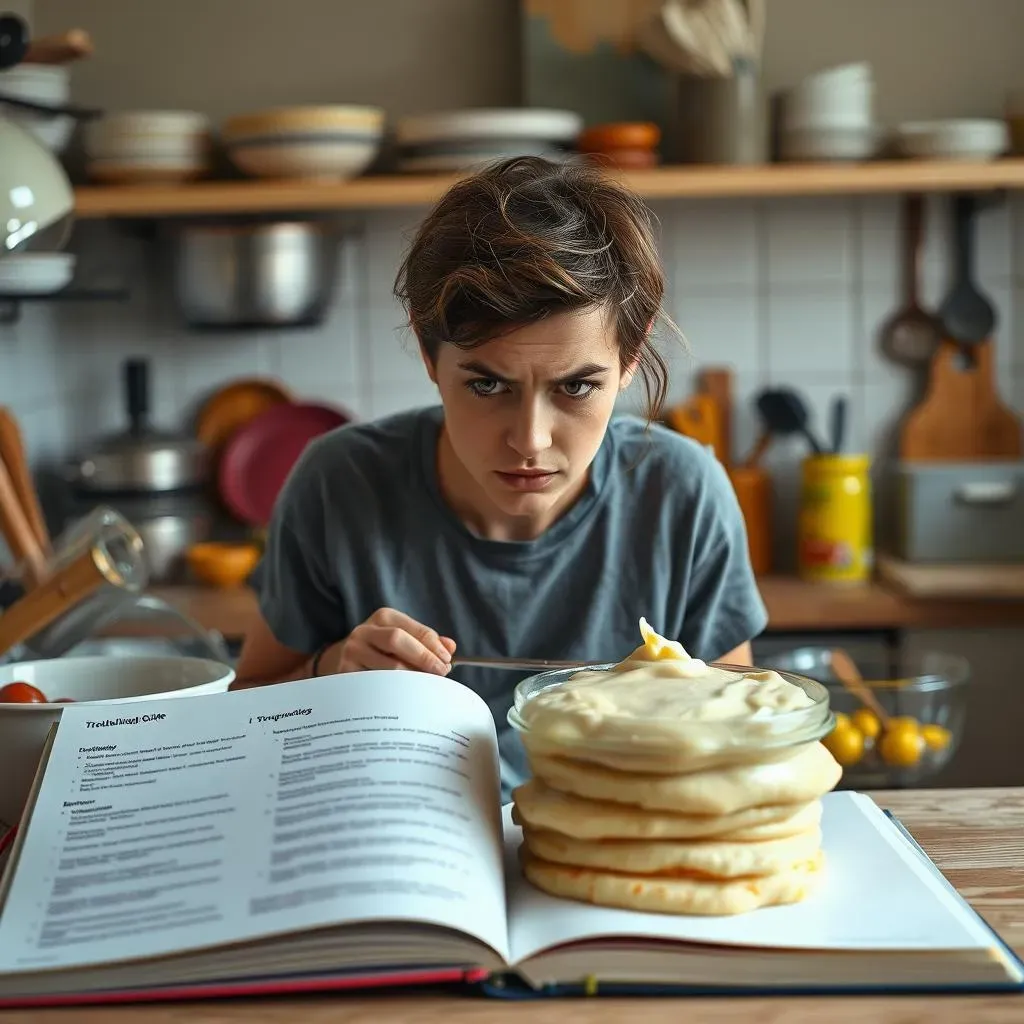
What to Do If the Batter Is Too Thick
Alright, so you're mixing your batter, and it looks more like cement than pancake batter. Don't panic! This is a common issue, especially with gluten-free flours, which can sometimes be a bit thirsty. It’s like they’re soaking up all the liquid and leaving you with a thick, goopy mess. The good news is, it's an easy fix. The most likely culprit is not enough liquid in your batter. Start by adding a tablespoon of milk (or your favorite plant-based milk) at a time, and gently stir until the batter reaches the right consistency. You want it to be pourable but not too runny. It should be like thick cream, not like a milkshake. It's all about finding that sweet spot.
I’ve had this happen to me countless times, especially when I’m experimenting with different flours. It’s like the batter is playing a trick on me. The key is to add the liquid slowly and check the consistency after each addition. You don't want to overdo it, or you'll end up with batter that's too thin. It’s like trying to balance a scale; you need to make small adjustments until you get it just right. Remember, patience is key in baking. If you want to try an alternative flour, see gluten-free pancake with coconut flour, it is a great alternative.
Problem | Solution |
|---|---|
Batter is too thick | Add milk (or plant-based milk), one tablespoon at a time |
How to Avoid Gummy Pancakes
Okay, so your batter is the right consistency, but now you’re dealing with pancakes that are gummy and dense instead of light and fluffy. Ugh, that's a bummer. This is often caused by either overmixing the batter or using too much of a binding agent, like xanthan gum (if your flour blend doesn't already have it). Remember, overmixing can make the gluten-free batter tough. It’s like you’re working the batter too hard, and it’s fighting back. Also, some gluten-free flours may have more starch, which can lead to a gummy texture if not balanced correctly. It’s like the flour is trying to hug you, and it won’t let go.
To avoid this, be sure to mix the batter gently until just combined. Don’t overdo it. If your flour blend already has xanthan gum, you may not need to add any more. If you're using a blend without it, try adding a tiny amount, like 1/4 teaspoon, and see if that helps. Also, make sure your baking powder is fresh; old baking powder can also contribute to dense pancakes. It’s like the baking powder is tired and can't do its job properly. And finally, don’t skip letting the batter rest for a few minutes. It allows the flour to absorb the liquid and the baking powder to activate, which can lead to lighter pancakes. If you want to learn more, check out gluten-free pancake without xanthan gum.
- Mix batter gently
- Don’t over mix
- Make sure baking powder is fresh
- Let the batter rest
Other Common Issues and Solutions
Sometimes, even when you do everything right, you might still run into some minor issues. For example, your pancakes might be browning too quickly on the outside but still be raw on the inside. This usually means your pan is too hot. Lower the heat to medium-low and cook them a bit slower. It’s like trying to cook something in a blast furnace, it’ll burn on the outside before it is cooked through. Or, your pancakes might be sticking to the pan. Make sure your pan is properly oiled or buttered and that it’s heated to the right temperature before adding the batter. Using a non-stick pan can also help a lot. It's like giving the pancakes a smooth runway for takeoff.
Also, if your pancakes are not rising, it could mean your baking powder is too old, or you might have overmixed the batter. Remember, fresh baking powder is key, and gentle mixing is essential. If you want to make it vegan, check gluten-free pancake without eggs for some tips. Baking is all about trial and error. Don’t be afraid to experiment and adjust the recipe until you find what works best for you and your family. It's like a science experiment, but the results are delicious.
Reader Variations and Success Stories
Reader Variations and Success Stories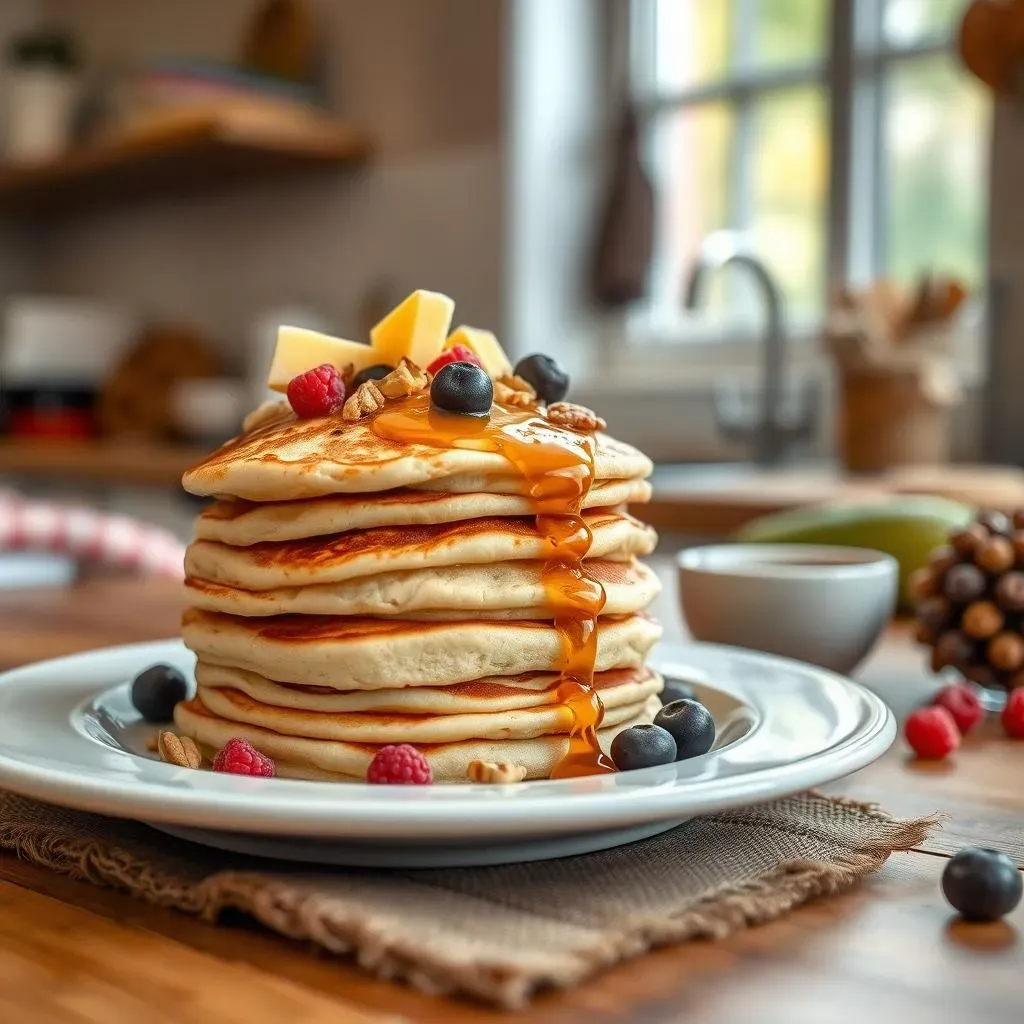
Real-Life Experiences from Other Parents
Okay, so you've got the basics down, but it's always helpful to hear from others who've been in the trenches, right? I mean, we're not all master chefs, and sometimes it's just reassuring to know that other people are also trying to feed their allergy-sensitive kids. This recipe has been tested by many parents, and it’s amazing to see the creative ways they’ve adapted it. Some parents have shared how they've used different plant-based milks, like almond milk or oat milk, with great results. Others have swapped out the eggs for flaxseed meal or applesauce. It’s like a community effort to make the best pancakes possible. It's not just about following a recipe; it’s about making it work for your family.
One mom told me that her daughter, who has multiple allergies, hadn’t been able to eat pancakes in years. She used this recipe, made a few tweaks, and her daughter finally had a pancake that she loved. It was such a heartwarming story, and it really highlights how impactful a good allergy-friendly recipe can be. It's like giving them a little slice of normalcy. You can also try gluten-free pancake with plant-based milk if you want more inspiration on alternative milks.
Adaptations for Different Dietary Needs
One of the best things about this recipe is that it’s super flexible. It can be adapted for various dietary needs, whether it's dairy-free, egg-free, or even vegan. If you're avoiding dairy, you can easily use plant-based milk, melted coconut oil instead of butter, and dairy-free yogurt as a topping. If you need to make it egg-free, you can use flaxseed meal or applesauce as a binder. It’s like having a blank canvas and you get to create what you need. And for those who are going fully plant-based, you can explore options like chia seeds or mashed banana for binding. It's all about finding the right balance and making the recipe work for your specific situation.
I remember a friend who is vegan, and she was looking for a good pancake recipe. She tried this one, used a few swaps, and now it is her go-to recipe for weekend brunch. It’s amazing how simple tweaks can make a big difference. It really shows how versatile the recipe is. You can also check gluten-free pancake with flaxseed meal for more ideas on how to use flaxseed as a binder. It is great to see how many people are enjoying this recipe.
Dietary Need | Adaptation |
|---|---|
Dairy-Free | Use plant-based milk, coconut oil, dairy-free yogurt |
Egg-Free | Use flaxseed meal or applesauce |
Vegan | Use plant-based options, chia seeds, or mashed banana |
Nutritional Information and Serving Suggestions
Nutritional Information and Serving Suggestions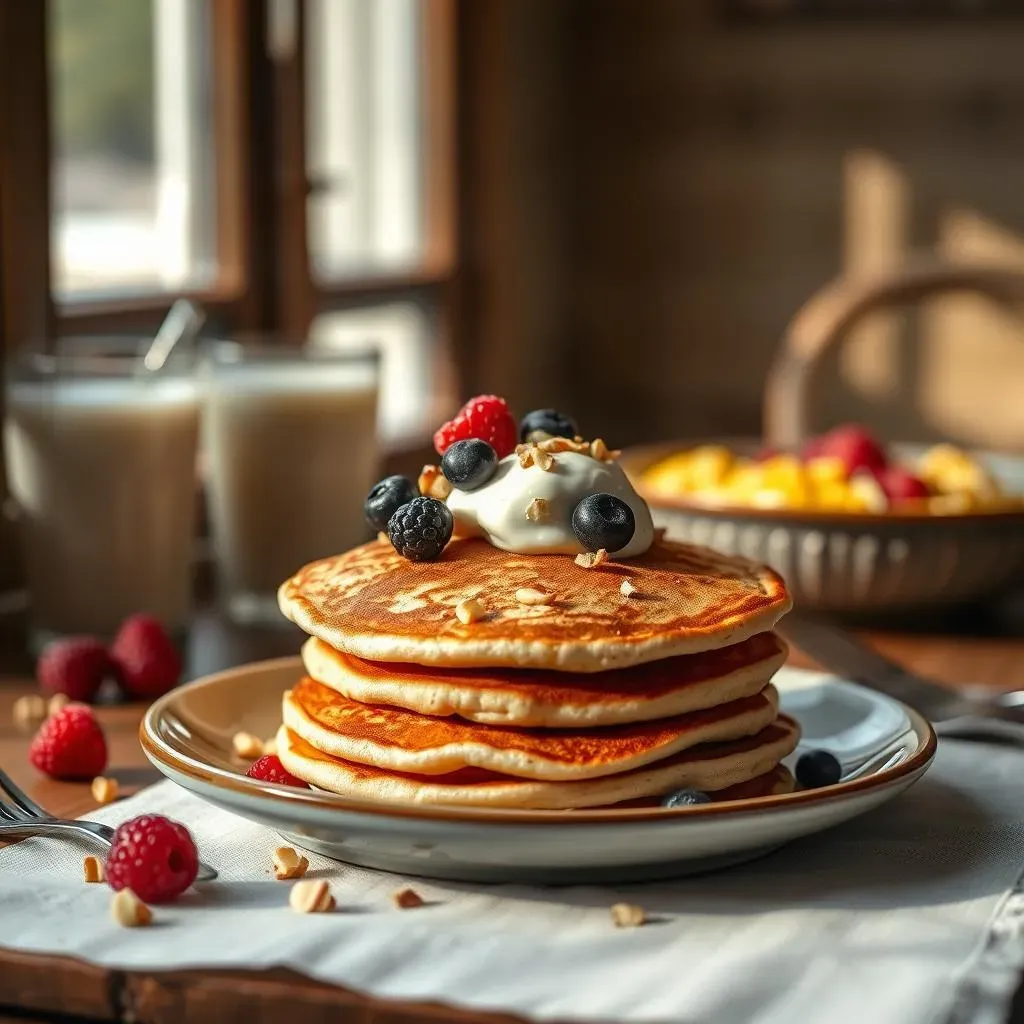
A Quick Look at the Numbers
Okay, so you've made these amazing gluten-free pancakes, but you're probably wondering about the nutritional side of things. Let's be real, pancakes aren't exactly health food, but they can be part of a balanced diet, especially when you're making them from scratch. A single serving of these gluten-free pancakes (about two pancakes) will vary in calories depending on the specific ingredients you use, but it will generally be around 200-250 calories. You're looking at a good source of carbohydrates for energy, and if you use a blend with protein-rich flours like almond or oat, you'll get a decent amount of protein too. It's like a mini power-up for your morning. It's also good to know that gluten-free doesn't automatically mean healthy; it just means it's safe for those who can't have gluten.
Also, the amount of sugar and fat will depend on your add-ins and toppings. If you're using lots of chocolate chips and syrup, the numbers will go up. But if you stick to berries, a little honey, or some yogurt, you can keep it on the healthier side. It’s all about making smart choices and finding a balance that works for your family. Remember, it's about enjoying your breakfast without feeling guilty. You can also check our guide for gluten-free pancake for weight loss, if you need more info.
Nutrient | Approximate Amount (per serving) |
|---|---|
Calories | 200-250 |
Carbohydrates | 30-40 grams |
Protein | 5-8 grams |
Fat | 8-12 grams |
Serving Ideas for a Balanced Breakfast
Now, let’s talk about how to make these pancakes part of a balanced meal. Think of pancakes as the base of your breakfast. You need to add some protein, healthy fats, and maybe some extra fruits and veggies to make it a complete meal. Try topping your pancakes with a dollop of Greek yogurt or a sprinkle of chopped nuts for a protein boost. You can also add a side of scrambled eggs or some lean turkey bacon. It’s like building a balanced plate, but with pancakes as the star. And don't forget the fruit! A side of fresh berries or a sliced banana can add vitamins, fiber, and natural sweetness. It’s all about creating a meal that’s both satisfying and nutritious.
I like to serve our pancakes with a side of berries and a small glass of milk. My kids love it, and I feel good knowing they’re getting a well-rounded breakfast. It's also fun to let your kids get involved in setting up the toppings so they can customize their own plate. It makes breakfast more engaging and gives them a sense of ownership. You can explore gluten-free pancake using banana for more ideas. Remember, breakfast is the most important meal of the day, so let's make it a good one!
- Top with Greek yogurt or nuts for protein.
- Add a side of eggs or lean meat.
- Include fresh berries or sliced fruit.
Wrapping Up: Pancake Success for Everyone
So, there you have it – a complete guide to creating delicious, safe, and fluffy gluten-free pancakes for your kids with allergies. From understanding the basics of gluten and allergies to mastering the art of the perfect flip, you now have the tools to conquer breakfast. Remember, a little fresh baking powder goes a long way, and the right flour can make all the difference. Don't be afraid to experiment with mix-ins and toppings to keep things exciting, and always feel free to adapt the recipe to suit your family's specific needs. With a little practice, you’ll be whipping up batches of these delightful pancakes in no time. Happy cooking, and may your mornings be filled with happy faces and full bellies!
